What's New
Displaying results 931 - 940 of 4052
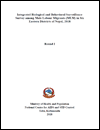
Resource | Publications,
This is the first round of the IBBS survey conducted among MLM in six eastern districts (Illam, Panchthar, Dhankuta, Jhapa, Morang and Sunsari districts) of Nepal. The first round of survey was undertaken to assess the burden of HIV, ither STI prevalence, and its associated factors. This baseline data will also help to analyye trends of HIV prevalence and its associated factors in future.
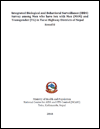
Resource | Publications,
This is the second round of Integrated Biological and Behavioral Surveillance (IBBS) survey among MSM/TG conducted in eight districts of Tarai Highway Districts in Nepal. The primary objectives of the IBBS surveys were: to determine the prevalence and trend of HIV, Syphilis, Chlamydia Trachomatis (CT), Neisseria Gonorrhoea (NG) and associated HIV-related risk behaviors among MSM/TG, collect information related to socio-demographic characteristics and explore the association between the risk behaviors and HIV and other specific STIs among MSM/TG population.

Resource | Publications,
The report is the third round of the Integrated Biological and Behavioral Surveillance Survey (IBBS) among the wives of migrant labourers in Province 7 (Far-Western) of Nepal. The survey is based on the data of 400 wives of those migrant labourers in the four districts (Achham, Doti, Kanchanpur, and Kailali) who temporarily migrate or used to migrate to India to work as labourers. The survey was conducted only among women aged 16 years and above who are current wives or widows of male, who had migrated to India for work for at least three months in the last three years and had returned home at least once within the last three years.
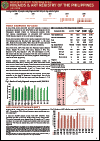
Resource | Fact Sheets,
In July 2018, there were 859 new HIV antibody seropositive individuals reported to the HIV/AIDS & ART Registry of the Philippines (HARP) . Twenty-two percent (193) had clinical manifestations of advanced HIV infection (WHO clinical stage 3 or 4) at the time of diagnosis.
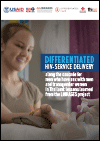
Resource | Publications,
The number of new HIV infections in Thailand has been in decline for more than 10 years, but HIV prevalence continues to be high among members of key populations (KPs) that account for more than 50% of all new infections in this concentrated epidemic.
The Key Population-Led Health Services (KPLHS) Model was developed by the Thai Red Cross AIDS Research Centre (TRCARC) and is currently being implemented by communitybased partners through funding provided by USAID/PEPFAR through the LINKAGES Project managed by FHI 360. KPLHS was started in four provinces (Bangkok, Chiang Mai, Chonburi and Songkhla) in Thailand, is now placed in the national HIV/AIDS strategy for scale-up, and receiving financing from the Thai National Health Security Organization (NHSO). The model defines a set of HIV-related health services, which focuses on improving HIV
service uptake among KPs including men who have sex with men (MSM), male sex workers (MSW), transgender women (TGW), and transgender women sex workers (TGSW) and delivers differentiated HIV services, tailored to the needs of the specific subpopulation.

Resource | Tools,
This Gender-Based Violence (GBV) Quality Assurance Tool offers health care providers, facilities, and program planners a straightforward way to start, strengthen or expand post-GBV health services through the use of evidence-based standards.

Resource | Publications,
This document is collaboratively developed by MPact Global Action for Gay Men’s Health and Rights (formerly known as MSMGF) and the World Health Organization (WHO), together with UNDP and UNFPA. It is an updated, abbreviated adaptation of WHO's 2015 technical brief: "HIV and young men who have sex with men"
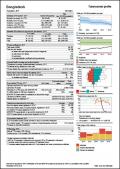
Resource | Reviews and Snapshots,
Tuberculosis country profiles are generated automatically based on data reported by countries and which are held in WHO's global TB database.
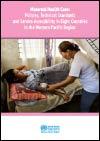
Resource | Publications,
WHO has developed evidence-based maternal health recommendations for reducing maternal mortality and morbidity. This review compares national guidelines and protocols, implementation and health system standards to WHO recommendations for eight countries that account for 96% of maternal deaths in the Western Pacific Region.
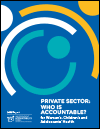
Resource | Publications,
The 2030 Agenda for Sustainable Development will not be achieved without the active and meaningful involvement of the private sector. Can the private sector be held accountable for protecting women’s, children’s and adolescents’ health? And if so, who is responsible for holding them to account, and what are the mechanisms for doing so?





